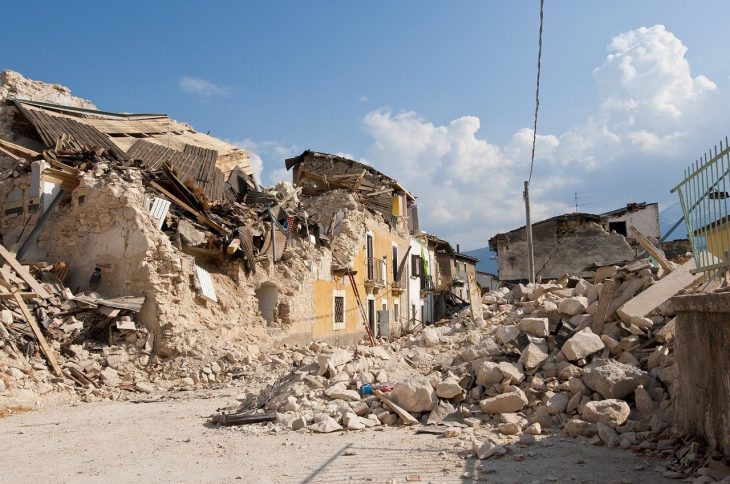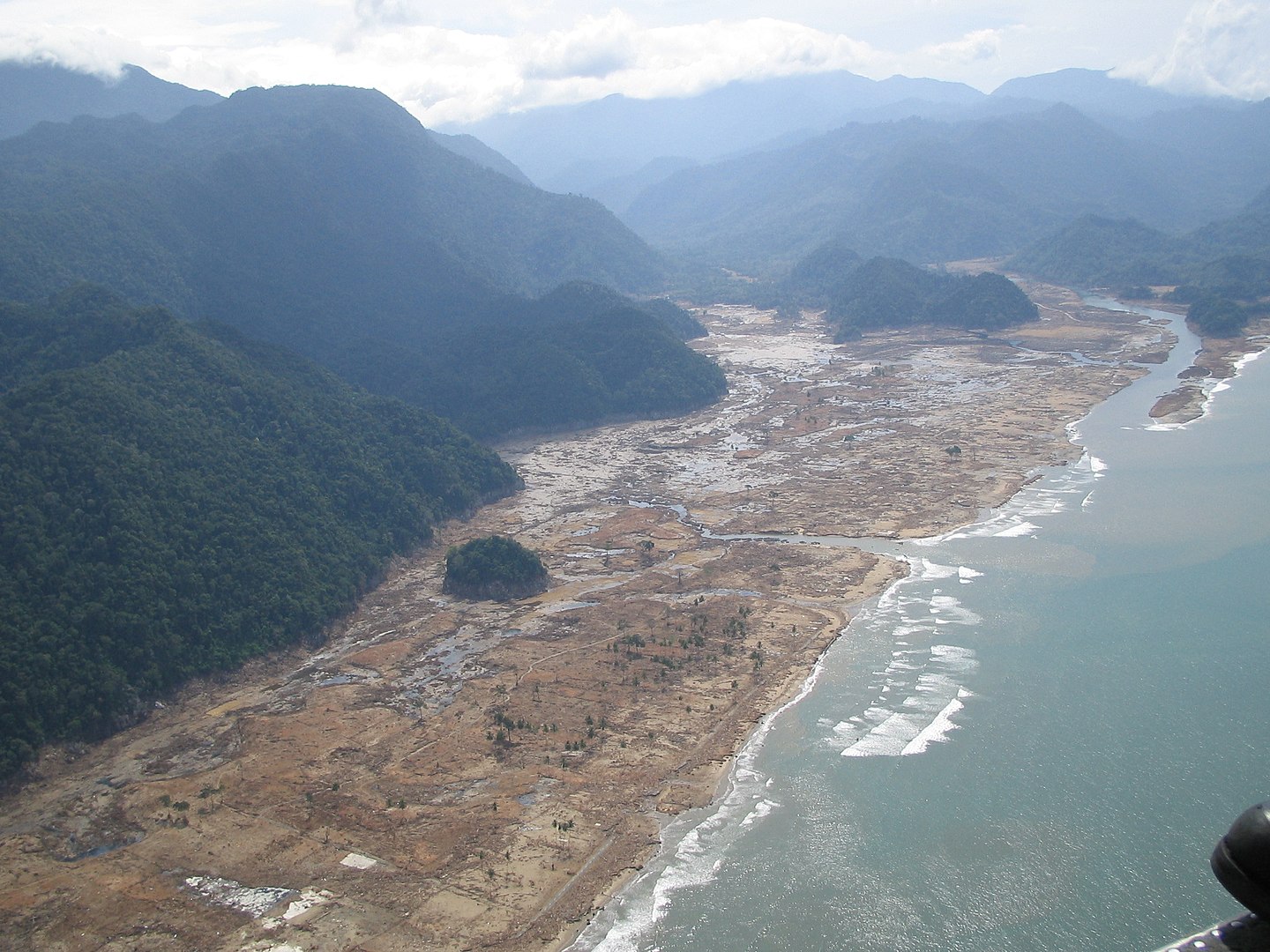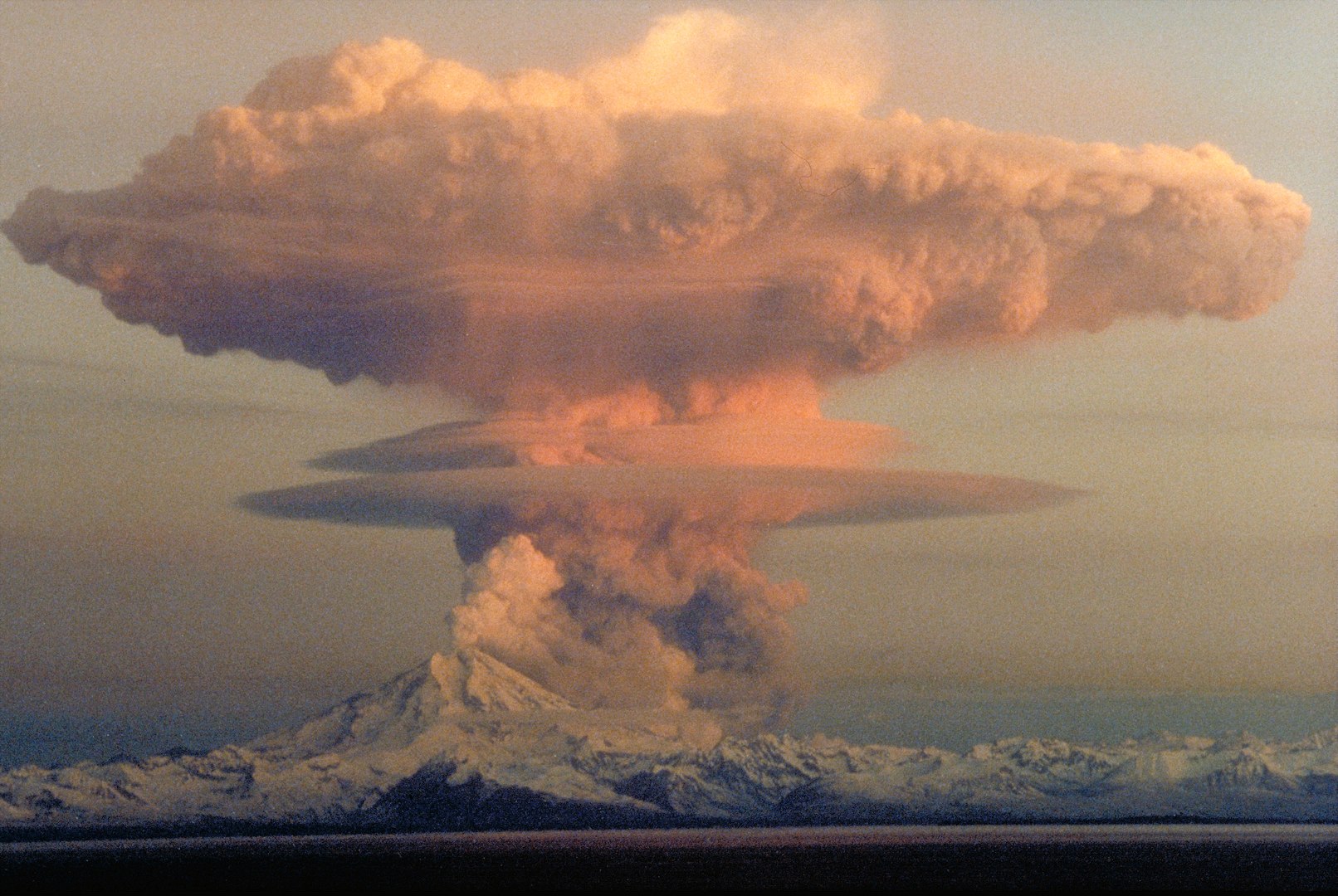
Earthquakes are feared since ancient times. Even more so than volcanoes, as you can never tell when or where an earthquake might strike. Apart from the damage it causes, there are more interesting things we can learn about earthquakes. Here we bring you some earthquake facts you may not know about!
Earthquakes have their positive sides too. Did you know that earthquakes presses land further up? Loosening and churning soil, enabling nutrients and minerals to be transferred evenly, are events that result in a very fertile type of soil. Earthquakes also help vegetation to flourish.
Earthquakes also allow scientists to learn more about the structure of the Earth by seeing how seismic waves behave. One common technique for finding oil has been to explode certain places before studying the seismic results. With earthquakes, you don’t need explosives. The Earth opens up on its own. Isn’t that amazing?
Not all earthquakes are deadly. In fact, millions of earthquakes occur each year, and most of them are too weak to be recorded. According, the NEIC, or the National Earthquake Information Center, only 100 or so out of the total number that happen each year are capable of causing real damage. Learn more about this amazing geophysical phenomenon with these 40 earthquake facts.
- The shaking of the ground in an earthquake only makes up 10% of its energy.
- The remaining 90% of an earthquake’s energy creates underground fractures or heats up the Earth’s interior.
- Ground ruptures caused by earthquakes can measure up to 1,000 kilometers long.
- An estimated 500,000 earthquakes take place around the world every single year.
- Humans feel only an estimated 100,000 earthquakes out of the yearly total.
- The Greek scientist and philosopher Thales of Miletus made the first speculations about earthquakes in 585 BC.
- Aristotle also made speculations about earthquakes in 340 BC.
- In 132 AD, Chinese polymathic scienitist Zhang Heng invented the first seismometers in Han Dynasty China.
- The modern science of seismology began in 18th Century Europe.
- Robert Mallet made the first seismological experiments using explosives in 1857.
- He also became the first man to ever use the word seismology.
- In 1897, Emil Wiechert discovered that the density of the Earth is greater than the density of rock.
- Richard Oldman discovered that the Earth does have a core.
- Harry Reid developed elastic rebound theory of earthquake mechanics back in 1910.
- Harold Jeffreys used earthquakes to discover the Earth’s liquid outer core in 1926.
- Scientists completed modern plate tectonics theory in the 1960s.
- A related field to seismology is paleoseismology, which studies earthquakes from past geological time periods.
- The Roman Pliny the Elder once described earthquakes as underground thunderstorms.
- The Greek God Poseidon also ruled over earthquakes as well as the sea.
- 90% of the world’s earthquakes take place along the Pacific Rim of Fire.
- 81% of the world’s most powerful earthquakes take place along the Pacific Rim of Fire.
Shaking and ground ruptures make up the most common effects of an earthquake.
Just how powerful the shaking becomes depends on the quake’s magnitude, as well as the distance from the epicenter. Other factors include the local geography and geology, which can either increase or decrease the quake’s power.
Ruptures, though, tend to follow the fault along which a quake takes place, usually breaking the ground for several meters at least. Ground ruptures can prove especially devastating, especially when they damage not just the likes of roads, bridges, and houses, but also dams and even nuclear power plants.
Liquefaction can also happen during an earthquake.
It happens when a building stands on sandy, or otherwise loose soil or ground that also happens to have plenty of groundwater. Examples include sandy ground or soil, as well as reclaimed land near the sea or other bodies of water. When an earthquake strikes, the shaking causes the solids in the ground to shake away from each other.
Water then fills up the spaces between them, turning the ground into a slurry that simply cannot support a building. Buildings literally sink into the ground as a result. This had led many countries to require buildings to stand on foundations of solid rock to prevent liquefaction.
Earthquakes can also cause fire and landslides.
The shaking can damage electrical lines, which can not only electrocute people. but also start fires in flammable materials in homes and offices. Those include curtains, carpets, upholstery, clothing, and paper among other materials.
Leaking gas lines prove especially volatile, needing only a single spark to burst into flame. Large concentrations of leaking gas can even do more than just start a fire, but outright explode. The shaking of the ground in an earthquake could also destabilize hillsides and mountainsides. This results in landslides, large parts of, if not the whole slope, literally falling down on what lies below.
Entire communities can find themselves buried under a landslide caused by an earthquake. This has led governments and private organizations to warn people to stay away from steep and sloping areas during and after an earthquake to avoid getting caught in a landslide.
Tsunami is one of the deadliest effects of an earthquake.

Tsunamis happen when a powerful earthquake strikes underwater, whether in deep or shallow water. The earthquake causes large volumes of water to move quickly, just like how jolting a bathtub causes the water inside to slosh around. In deep water, the movements of the waves don’t become apparent, with cases existing of men at sea not noticing tsunamis moving under them. They only realize the fact after they come home, and find the shores devastated by the tsunami. The tsunamis can also travel very far, with earthquakes off the coast of the Americas able to damage countries as far away as Japan.
The 1556 Shaanxi Earthquake remains the deadliest in human history.
Chinese records estimate the number of deaths at 830,000 and spread out over an area 840 km wide. In addition to Shaanxi Province, 9 other provinces also suffered from the earthquake: Anhui, Gansu, Hebei, Henan, Hubei, Hunan, Jiangsu, Shandong, and Shanxi.
In Shaanxi Province alone, the cities of Huayin and Weinan saw complete destruction. And in some places, ruptures opened up as deep as 20 meters, with landslides occurring widely. Even cities as far away as Chengdu, Beijing, and Shanghai saw damage resulting from the earthquake. This led to Chinese historians calling it the Jiajing Great Earthquake after the reigning Emperor of the Ming Dynasty at the time.
The 1976 Tangshan Earthquake has the distinction of being the deadliest earthquake of the 20th century.
It killed an estimated 242,000 people and destroyed an estimated 85% of the buildings in the city of Tangshan. It also caused widespread flooding in Tangshan’s coal mines, with the city’s coal industry needing a full year to recover. The earthquake also damaged the railways linking Tangshan to the rest of China, in particular the cities of Beijing and Tianjin. This made it even more difficult for help to reach the city after the disaster.
The 1960 Chilean Earthquake remains the most powerful earthquake ever recorded.
Taking place on May 22, 1960, it reached a magnitude of 9.5. In comparison, the 2004 Indian Ocean earthquake only reached a magnitude of 9.3. The earthquake also caused a series of tsunamis, which affected not just the Chilean coast, but also Hawaii, New Zealand, New Guinea, the Philippines, and Japan. An estimated 6,000 people died from the quake and tsunamis both, and caused damages worth up to $800 million.
Aftershocks tend to follow earthquakes.
Talk about worrying examples of Earthquake Facts. Aftershocks result from the ground adjusting to the geological changes caused by the preceding quake. The danger comes from how unpredictable aftershocks tend to become, with no way to tell how many aftershocks will occur, when they will strike, and how powerful they can become. It only becomes worse when the preceding quake has already damaged the existing infrastructure. Thus weakened, they may not hold up to the aftershocks’ power.
Foreshocks sometimes happen before an earthquake
Scientists estimate they occur in 40% of earthquakes with magnitudes of less than 7, and in 70% of earthquakes with magnitudes greater than 7. However, since not all quakes have foreshocks, scientists don’t consider foreshocks reliable in predicting when and how powerful an earthquake will strike. The 2004 Indian Ocean earthquake, for example, did not have foreshocks preceding it.
Volcanoes also cause earthquakes of their own.

The magma moving up from under the Earth to the surface causes the surrounding ground to shake. The extreme heat of the magma also exists as a factor, as the geography changes in response to the heat. Even without an eruption, though, volcanic earthquakes can still occur, as magma moving around underground still affects the surrounding rock. Volcanologists monitor those quakes, as any changes in their number and magnitude could serve as a warning for a volcanic eruption.
Human activity caused the 2011 Oklahoma Earthquake.
A strange, but true example of earthquake facts. Specifically, wastewater produced by the oil industry injected into underground storage wells caused a fracture in the Wilzetta fault. The fracture resulted in a magnitude 5.5 quake, with a preceding magnitude 4 foreshock. Only two people suffered injuries from the quake and no deaths. However, 14 homes in Prague, Oklahoma, suffered various degrees of damage, as did St. Gregory’s University in Shawnee.
Seismometers and seismographs make up the primary seismological tools.
Seismometers measure the vibrations in the Earth and then transmit them to seismologists for study. They don’t usually record them, but when they do, they’re called seismographs instead of seismometers. In both cases, though, seismologists bury them underground, which serves to protect them from surface vibrations that can compromise their data.
Some animals have the ability to detect earthquakes.
That said, statistics and scientific studies show that animals can’t predict them in the long-term, such as months or weeks in advance. The animals just pick up the vibrations in the Earth that humans lack the sensitivity to pick up and react on instinct. Another strange, but true example of earthquake facts.
Seismologists generally struggle to predict when an earthquake will happen.
They’ve tried as back as the 1970s, but all methods tried always ended with failure. This has led some seismologists to argue the impossibility of predicting earthquakes. Others disagree, and instead argue that the current understanding of earthquakes just remains incomplete.
Some buildings use weights to limit an earthquake’s possible damage.
Tall and lightweight buildings feature mobile weights resting on springs that adjust as the building sways. This keeps the building stable not just against the shaking from a quake, but also from the wind. In particular, they balance the stresses from excessive movements and keep them from becoming too much.
Other buildings use slosh tanks to protect themselves from an earthquake.
Usually filled with water, the tanks usually stay near or on a building’s roof, with the movements of the liquid inside balancing any swaying caused by a quake. That said, they require large amounts of liquid to stay effective, usually around 5% of the building’s total weight. If water makes up the liquid in the tank, they also double as an emergency reserve, such as for a fire.
Other buildings simply reinforce their structures to protect themselves from an earthquake.
The most common reinforcement involves adding steel frames along the outside of a building’s lower floors. Alternatively, reinforcement can take the form of encasing the building’s lower floors with additional walls made from reinforced concrete.
These help the building resist an earthquake’s force. Other reinforcements include rigidly binding neighboring buildings together, to keep any one of them from falling on the others and starting a domino effect of collapsing buildings.
The US Federal Emergency Management Agency (FEMA) encourages citizens to do their part to prepare for an earthquake.
These include advising citizens to stockpile emergency food and water reserves, as well as medicine. That last becomes especially important for people with specific prescription medicines, as getting them may prove difficult if not impossible after a quake.
People with children should also have prepared and well-defined plans for after an earthquake, to limit the shock the children face after a quake. FEMA also encourages citizens to also have emergency power sources if possible, much like the case with hospitals and other critical services. They should also inform themselves about how to shut off their homes’ gas supplies, in order to minimize gas leaks and their dangers.
Earthquakes also take place on the Moon.

Both the Apollo and unmanned missions to the Moon have detected and recorded hundreds of quakes on the Moon. They typically have magnitudes of less than 5.5, with scientists thinking them caused by tidal stresses caused by the interactions between the Earth and the Moon’s gravity. Scientists have also used them to learn more about the inner layers of the Moon. Talk about astronomical examples of earthquake facts.
Mars once had Marsquakes of its own.
Evidence suggests as much, specifically magnetic striping over Mars’ southern hemisphere. On Earth, such phenomena result from the splitting and spreading of thin crust, but on Mars, it remains unclear if the case remains the same. At the very least, Mars once had active volcanoes, with the biggest of them all, Olympus Mons, easily as big as France. Today, though, Mars appears dead tectonically, and scientists think that if Marsquakes do still happen, they only happen once every million years.
Was this page helpful?
Our commitment to delivering trustworthy and engaging content is at the heart of what we do. Each fact on our site is contributed by real users like you, bringing a wealth of diverse insights and information. To ensure the highest standards of accuracy and reliability, our dedicated editors meticulously review each submission. This process guarantees that the facts we share are not only fascinating but also credible. Trust in our commitment to quality and authenticity as you explore and learn with us.


